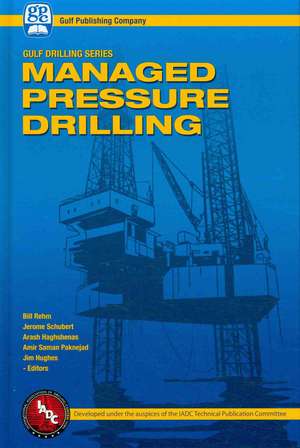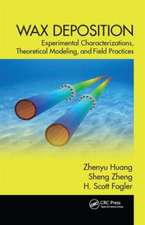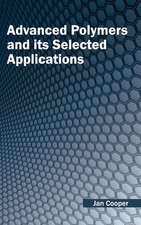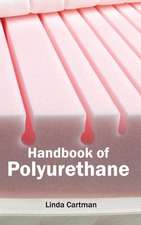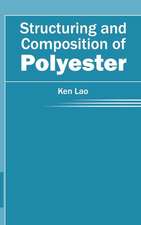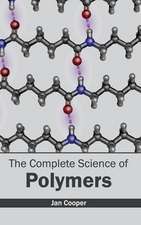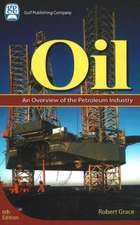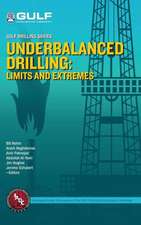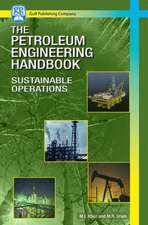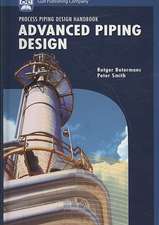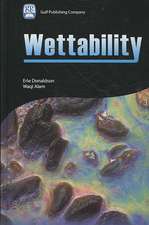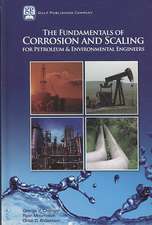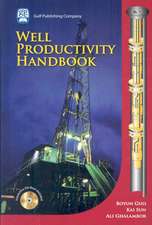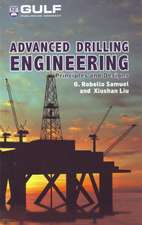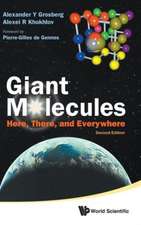Managed Pressure Drilling: Gulf Drilling Guides
Autor Bill Rehm, Jerome Schubert, Arash Haghshenas, Jim Hughes, Amir Saman Paknejaden Limba Engleză Hardback – dec 2009
Preț: 875.86 lei
Preț vechi: 1084.66 lei
-19% Nou
Puncte Express: 1314
Preț estimativ în valută:
167.61€ • 173.93$ • 140.10£
167.61€ • 173.93$ • 140.10£
Carte tipărită la comandă
Livrare economică 10-24 martie
Preluare comenzi: 021 569.72.76
Specificații
ISBN-13: 9781933762241
ISBN-10: 1933762241
Pagini: 369
Ilustrații: 1, black & white illustrations
Dimensiuni: 156 x 234 x 28 mm
Greutate: 0.77 kg
Editura: ELSEVIER SCIENCE
Seria Gulf Drilling Guides
ISBN-10: 1933762241
Pagini: 369
Ilustrații: 1, black & white illustrations
Dimensiuni: 156 x 234 x 28 mm
Greutate: 0.77 kg
Editura: ELSEVIER SCIENCE
Seria Gulf Drilling Guides
Cuprins
Preface
Contributors
List of Abbreviations
Chapter 1 The Why and Basic Principles of Managed Well-Bore Pressure
About This Chapter
1.1 Introduction to Managed Pressure Drilling and Some Definitions
1.2 History
1.2.1 Old Ideas Made New
1.2.2 New Ideas
1.3 Advantages and Methods of Managed Pressure Drilling
1.3.1 An Adaptive Process
1.3.2 Extending the Casing Points
1.3.3 Lost Circulation
1.3.4 Well Kicks
1.3.5 Differentially Stuck Drill Pipe
1.3.6 Deepwater Drilling
1.4 Basic Mathematical Ideas behind MPD
1.4.1 Bottom-Hole Pressure Calculations with Liquids
1.4.2 Expansion (or Compression) of a Gas Bubble with No Fluid Flow
1.4.3 Ideal Gas Law
1.4.4 Strong–White Equation
1.4.5 The Effect of Annular Pressure Loss on Bubble Size
1.5 Basic Well Control
1.5.1 Driller’s Method of Well Control
1.5.2 Wait and Weight Method of Well Control
1.5.3 Basic Well-Control Formulas
1.5.4 Lag Time—Choke to Bottom of the Hole or Choke to Standpipe
1.6 Pore Pressure
1.7 Overburden Pressure
1.8 Rock Mechanics
1.8.1 Fracture Pressure
1.8.2 Well-Bore Ballooning and the Leak-off Test
Questions
References
Answers
Chapter 2 Situational Problems in MPD
About This Chapter
2.1 Introduction
2.2 ECD Manipulation—Pore Pressure and Fracture Pressure Convergence
2.2.1 Chokes
2.2.2 Pumps
2.2.3 Pipe Movement
2.2.4 "Ballooning"
2.2.5 Precision
2.2.6 Well Control
2.2.7 Lag Time
2.3 Total Lost Circulation
2.4 Deepwater Marine Drilling
2.4.1 The Problem in the Surface Hole
2.4.2 Excessive Casing Strings
2.4.3 U-Tube Effect in Riserless or Limited Riser Operations
2.4.4 Hydrostatic Control Valve
2.4.5 Annular Pressure Changes (ECD Problems)
2.4.6 Well-Bore Ballooning
2.4.7 Well Control
2.5 Connections and Trips
2.6 Annular Pressure Loss and Hydraulics
2.6.1 Equivalent Circulating Density
2.6.2 Historical Calculation of the ΔP in APL
2.6.3 Annular Pressure Loss Calculations
2.6.4 Hydraulics Equations
2.6.5 Annular Frictional Pressure Loss Calculation, ΔPa
2.7 The Effect of Pipe Movement
2.7.1 Pipe Movement Changes the Bottom-Hole Pressure
2.7.2 Estimating Pressure Surge and Swab
Questions
References
Answers
Chapter 3 Constant Bottom-Hole Pressure with Pressure as a Primary Control
About This Chapter
3.1 Introduction
3.2 Pressure Control
3.3 Constant-BHP Choke Systems
3.4 Operational Considerations
3.5 DAPC System Description
3.5.1 DAPC Choke Manifold
3.5.2 DAPC Back-Pressure Pump
3.5.3 Integrated Pressure Manager
3.5.4 Case Study
Questions
References
Answers
Chapter 4 MPD with Flow Measurement as the Primary Control
About This Chapter
4.1 Description of the Process
4.2 Special Drilling Equipment
4.2.1 Circulation Path
4.2.2 Rotating Control Device
4.2.3 Drilling Manifold
4.3 Real-Time Data Acquisition and Control
4.4 Drilling Applications
4.4.1 Standard Approach
4.4.2 Special Systems Approach
4.5 Case Histories
Questions
References
Answers
Chapter 5 Continuous Circulation System
About This Chapter
5.1 Introduction
5.2 The System
5.3 Development
5.4 Control System
5.5 Applications
5.6 Operation
5.7 Well Planning
5.8 Records and Reporting
5.9 Case History
5.10 Safety
Questions
References
Answers
Chapter 6 A Simplified Approach to MPD
About This Chapter
6.1 Introduction
6.2 Discussion
6.3 A Simplified Approach
6.4 Implementation
6.5 Conclusion
Questions
References
Answers
Chapter 7 Mud Cap Drilling
About This Chapter
7.1 History of Mud Cap Drilling
7.2 Pressurized Mud Cap
7.3 Floating Mud Cap
7.4 Mud Cap Operation
7.4.1 Mud Cap Drilling
7.4.2 Mud Cap Tripping
7.5 Pressurized Mud Cap Operation
7.5.1 Pressurized Mud Cap Drilling
7.5.2 Pressurized Mud Cap Tripping
7.6 Conclusion
Questions
References
Answers
Chapter 8 Dual-Gradient Drilling
About This Chapter
8.1 Introduction
8.2 Problems Associated with Conventional Riser Systems in Deep Water
8.3 AGR Riserless Mud Return System
8.3.1 Introduction
8.3.2 Primary Uses
8.3.3 Equipment
8.3.4 Operation
8.3.5 Critical Issues
8.3.6 Summary
8.4 AGR Dual-Gradient System
8.4.1 Introduction
8.4.2 Primary Uses
8.4.3 Equipment
8.4.4 Operation
8.4.5 Critical Issues
8.4.6 Summary
8.5 Subsea Mud-Lift Drilling System (Joint Industry Project)
8.5.1 SMD Equipment
8.5.2 The U-Tube Phenomenon with DGD
8.6 Dual-Gradient Well Control
8.6.1 Recording Prekick Information
8.6.2 Kick Detection
8.6.3 Dynamic Shut-in of the DGD System
8.6.4 Kick Circulation
8.7 Additional Comments
8.8 Examples
Questions
References
Answers
Chapter 9 Equipment Common to MPD Operations
About This Chapter
9.1 Rotating Control Devices and Rotating Annular Preventers
9.1.1 Rotating Control Devices (Passive Systems)
9.1.2 Rotating Annular Preventors (Active Systems)
9.1.3 Comments on the Use of Active or Passive Systems
9.1.4 Rotating Control Devices on Risers
9.2 Chokes
9.2.1 Power Choke
9.2.2 Swaco Super Choke
9.2.3 Swaco Auto Super Choke
9.3 Drill-Pipe Nonreturn Valves
9.3.1 Basic Piston-Type Float
9.3.2 Hydrostatic Control Valve
9.3.3 Inside BOP (Pump-Down Check Valve)
9.3.4 Retrievable NRV or Check Valve (Weatherford)
9.4 Down-Hole Annular Valves
9.4.1 Casing Isolation Valve
9.4.2 Drilling Down-Hole Deployment Valve
9.4.3 Quick Trip Valve
9.5 ECD Reduction Tool
9.5.1 Unique Considerations
9.5.2 Advantages
9.5.3 Challenges
9.5.4 Description
9.6 Coriolis Flowmeter
9.7 Disc Pump (Friction Pump)
Questions
References
Answers
Chapter 10 MPD Candidate Selection
About This Chapter
10.1 Introduction
10.2 Candidate Selection and Feasibility Study
10.3 What is MPD Candidate Selection?
10.4 Steps Involved in Candidate Selection
10.4.1 Purpose of the Study
10.4.2 Procurement of Information
10.4.3 Hydraulic Analysis
10.4.4 Method Selection
10.4.5 Viability of the Option
10.4.6 Equipment
10.4.7 HAZOP and HAZID (Optional)
10.5 Examples
10.5.1 CBHP
10.5.2 Dual-Gradient SMD
Questions
Answers
Appendix A Rock Mechanics
A.1 Stress and Strain (Elastic and Nonelastic Deformation)
A.2 Horizontal and Vertical Rock Stress
Appendix B Rheology
B.1 Introduction
B.2 Shear Stress and Shear Rate
B.3 Newtonian Model
B.4 Non-Newtonian Model
B.4.1 Bingham Plastic Model
B.4.2 Power Law Model
B.4.3 API (Recommended Practice 13D, 2003) Model
B.4.4 Herschel–Bulkley Model
References
Appendix C Useful Conversion Factors
Appendix D IADC Well Classification System for Underbalanced Operations and Managed Pressure Drilling
Appendix E IADC Underbalanced and Managed Pressure Drilling Guidelines—HSE Planning Guidelines
Appendix F IADC UB and MPD Glossary
Index
